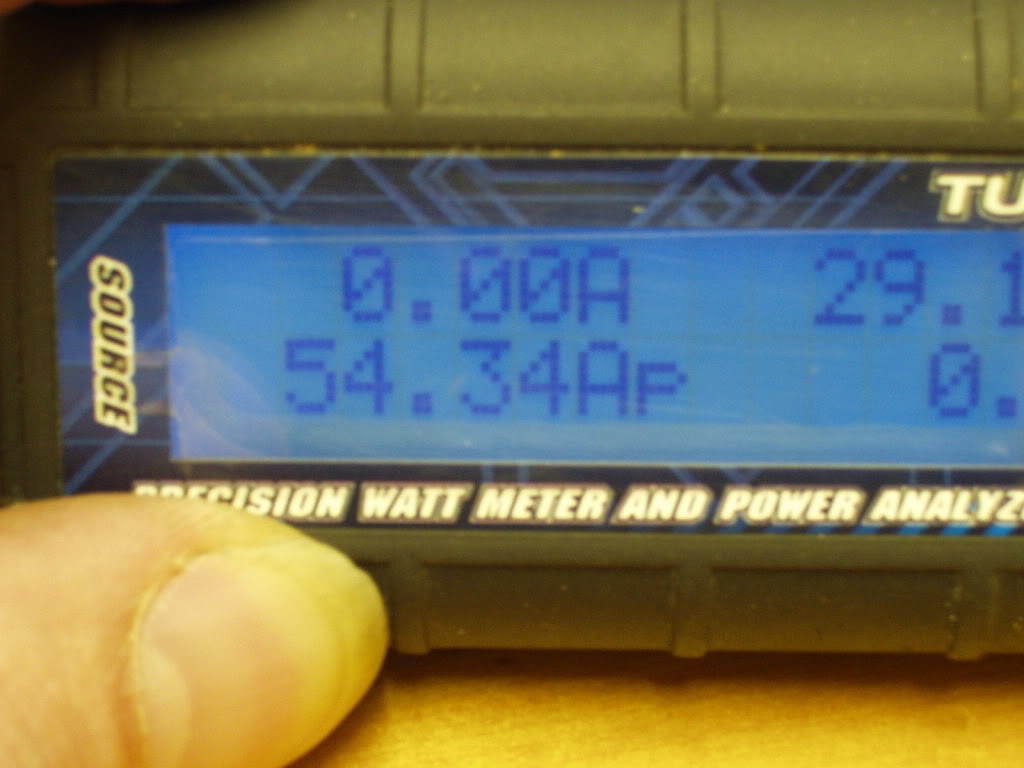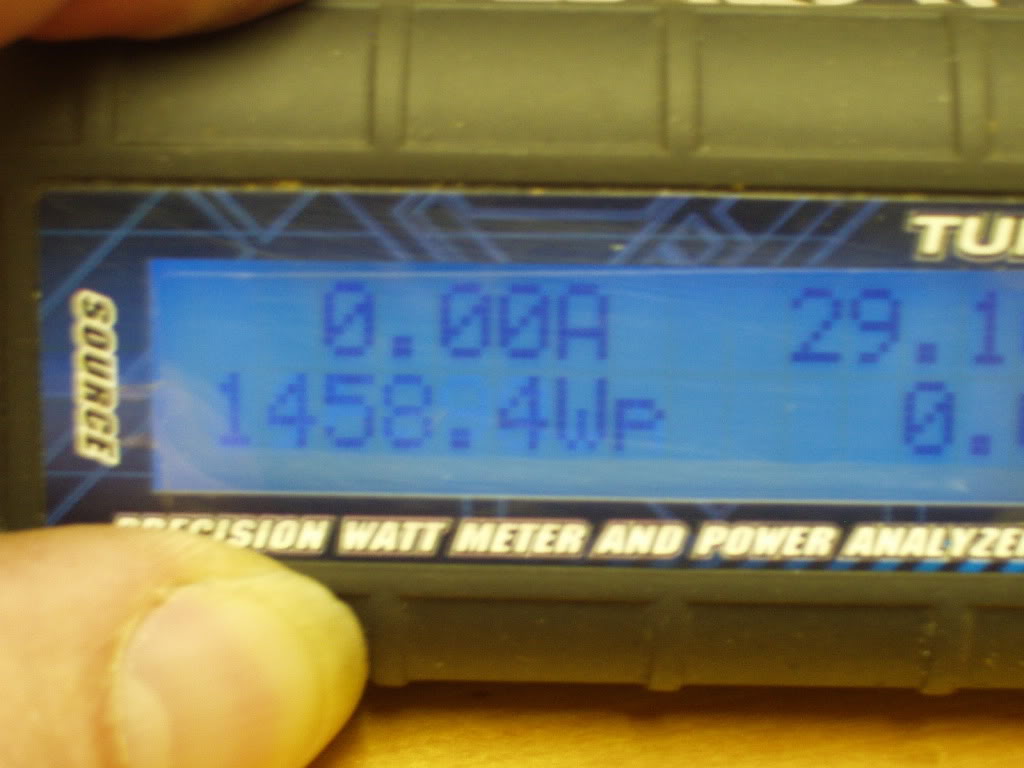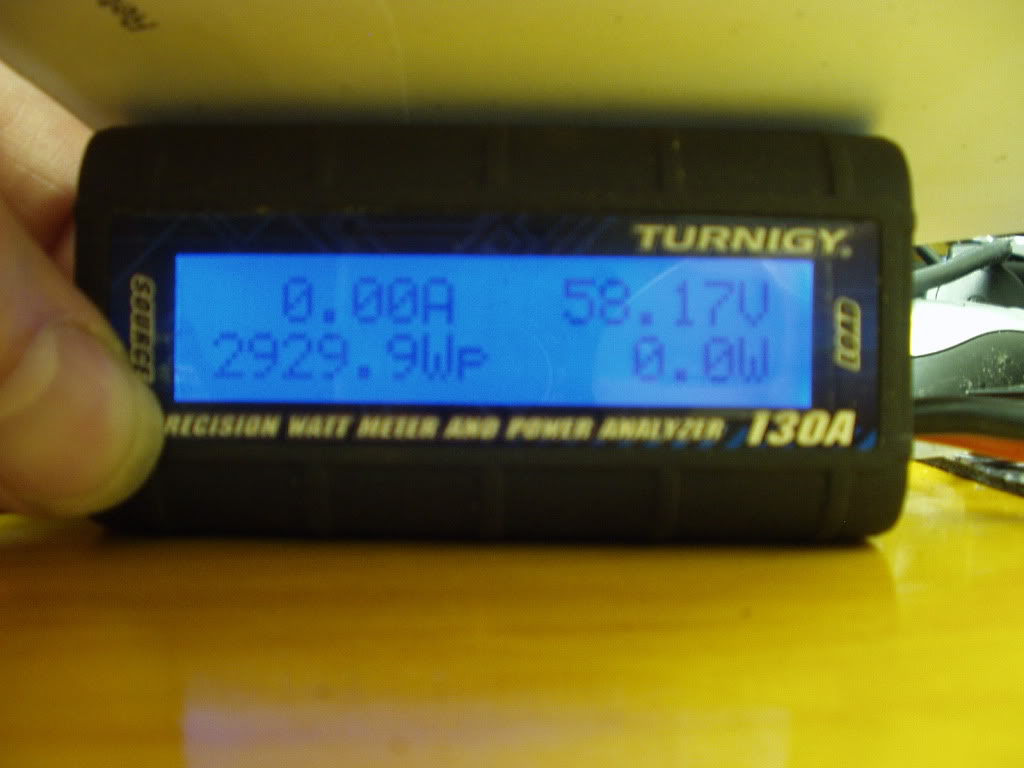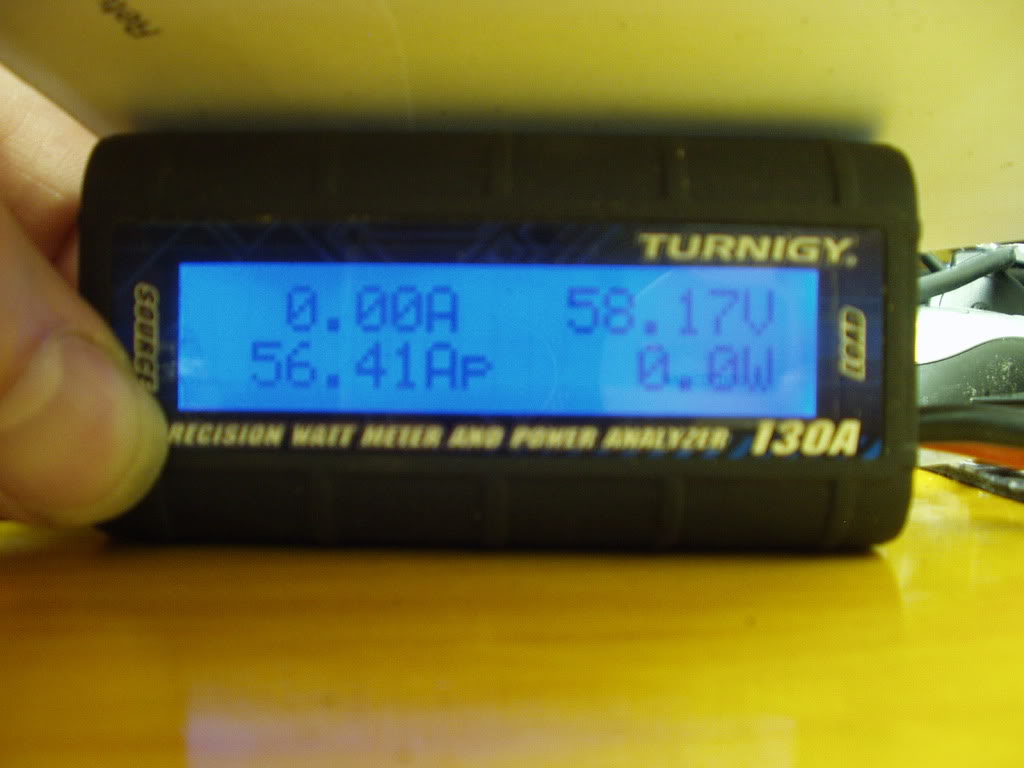I was going to throw the wheel back together and test as it was, but I thought it might be interesting to increase the thickness of my additional shunt, so I soldered on another thin wire loop and then decided to solder them both together to give an even larger cross sectional area.
I reassembled the wheel and put it securely in the bench vice and connected up a 7cell 5Ah LiPo pack measuring just under 29.4V.
After the two beeps, I spun the wheel slightly and twisted the throttle and she burst into life running as smooth as ever. I tested the throttle, cruise and the regen functions and all are working fine.

Now the really exciting bit; I put on a pair of heavy duty gloves and decided I'd do a stall test to see how much current it would draw in sensorless mode with the improved shunt mod. I opened the throttle and grabbed the tyre to slow the wheel down as much as possible, but I could not quite manage to stop it completely. There was a strong smell of burning rubber from the friction of the tyre against the leather gloves and then I noticed the reading on the Watt meter:


I bet you can imagine how I'm feeling right now?





If it draws 1458 Watts on 7 cells it should be at least 2916 Watts
(3.9HP) on 14 cells, but I don't know how long the controller will last at 55 Amps, I'm pretty sure something is bound to expire
(probably in a big way) sooner or later with this amount of power.
I just couldn't resist trying it:


... and it still lives!
I wonder if I can manage 4HP?

I'm still not sure whether the second controller was actually making any difference at all, perhaps it could have died when I initially connected the battery, and the 25% power increase may just have been the result of the shunt modification alone, as I still feel the second controller should have given nearer 100% increase if it was working correctly.
I think my initial feelings may well have been correct in this instance, but I'm still puzzled as to why all three hall sensors failed.
Alan